
Posts Tagged: A. I. Root
Nematode Booth Wows Crowd at UC Davis Biodiversity Museum Day
Nematodes! The display of nematodes (aka "roundworms") at the 11th annual UC Davis Biodiversity Museum Day, held Sunday, March 6 in the UC Davis Conference Center, drew scores of curious visitors. Many were dog owners with an interest in heartworms. Many others...
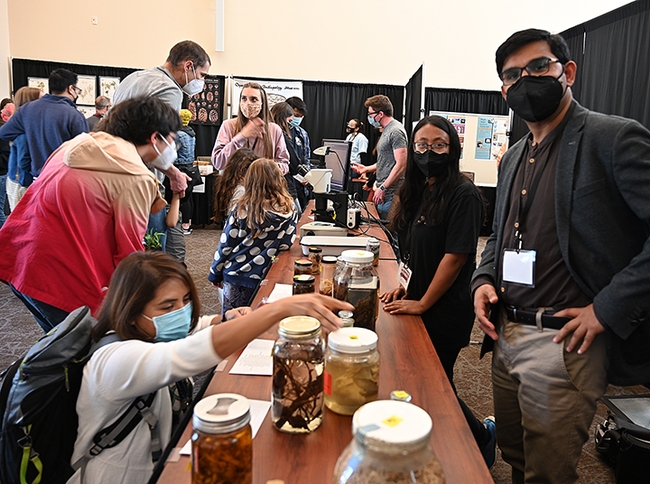
Three nematologists kept busy at their booth at the UC Davis Biodiversity Museum Day. In front is coordinator Shahid Siddique, assistant professor, and his doctoral students Pallavi Shakya (nearest him) and Alison Coomer. In the back (far right) is Rob Blundell, not part of the lab, but who assisted. (Photo by Kathy Keatley Garvey)
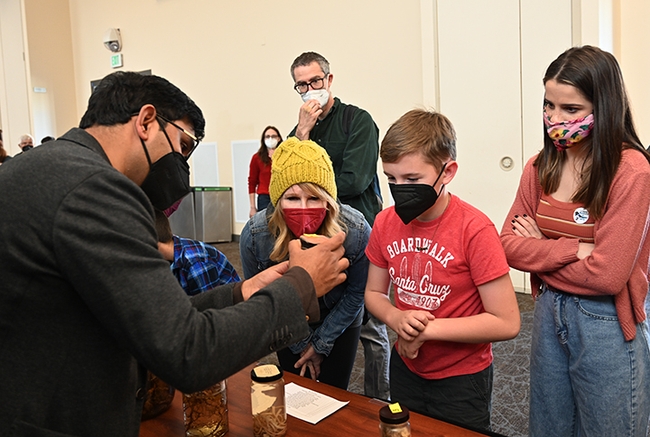
Nematologist Shahid Siddique, assistant professor, UC Davis Department of Entomology and Nematology, shows nematodes to curious visitors. (Photo by Kathy Keatley Garvey)
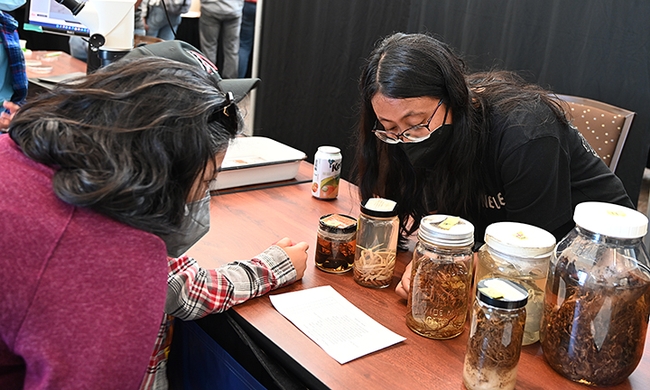
UC Davis doctoral student and nematologist Pallavi Shakya answers questions about nematodes. (Photo by Kathy Keatley Garvey)
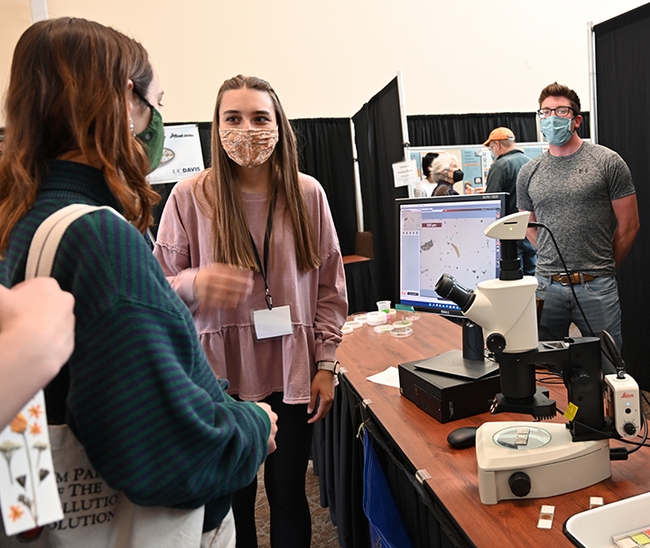
Doctoral student and nematologist Alison Coomer fields questions from the crowd. At far right is scientist Rob Blundell, who assisted. (Photo by Kathy Keatley Garvey)
Of French Fries, Couch Potatoes and Root-Knot Nematodes
When you think of potatoes, your thoughts probably turn to baked potatoes, French fries, the "one-potato-two-potato" game, or "couch potatoes" (especially during the sheltering-in mandates). You're not thinking of root-knot nematodes, major pests of potatoes. But potato growers and...
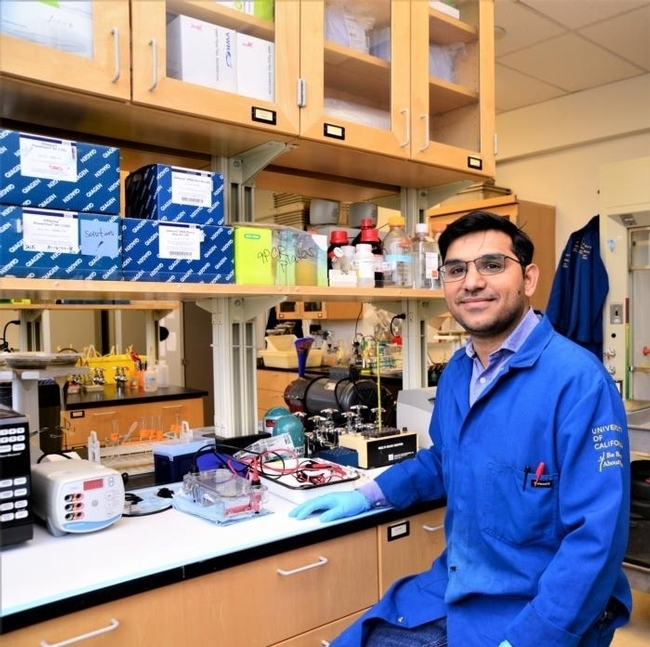
UC Davis nematologist Shahid Siddique. (Photo by Kathy Keatley Garvey)
To Kill a Honey Bee
How times change with the advancement of knowledge. It's long been known that when honey bees—as well as other insects—get trapped in the milkweed's pollinia, or sticky mass of pollen, many perish when they are unable to free themselves. So when we were perusing the book, ABC of Bee...
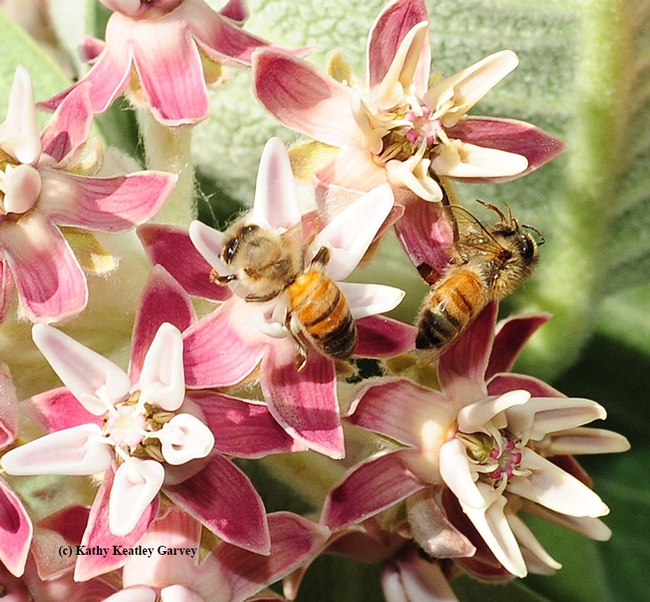
Honey bee (at right) perished when her foot got caught in the pollinia and she was unable to free herself. At left is a foraging bee. (Photo by Kathy Keatley Garvey)
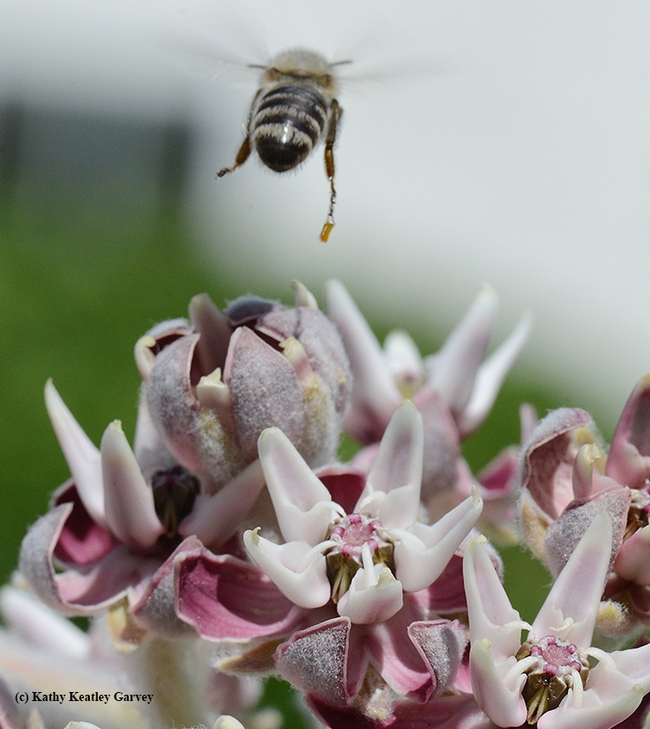
A honey bee flies off with pollinia on her leg. She returned to gather more nectar from the milkweed. (Photo by Kathy Keatley Garvey)
Clover Root Curculio Found in Several Klamath Basin Alfalfa Fields
The warm weather this week is hopefully the best remedy for jump-starting many alfalfa fields damaged by frost and hail the last couple of weeks. If you have fields with frost damage that are not improving, you might dig some alfalfa plants and look at the roots. Recently we have multiple...
UC ANR scientists get $450,000 to study pesticide alternatives
UC ANR scientists get $450,000 to study pesticide alternatives

The root maggot, a pest of cole crops, can wipe out an entire field of broccoli or cauliflower by tunneling through the plants’ roots. With a new $302,542 grant from the Department of Pesticide Regulation, Shimat Joseph, UC Cooperative Extension advisor in Monterey County, will study ways growers can protect their high-value crops from this persistent pest.
“In the Salinas Valley, cabbage maggot infestation in a field can exceed 90 percent,” said Joseph, who specializes in integrated pest management.
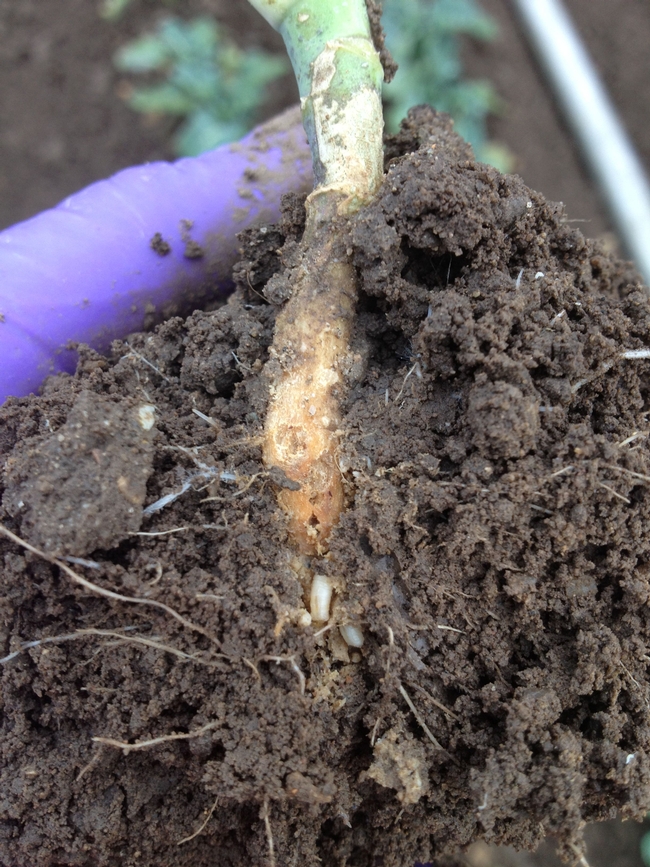
Joseph, who specializes in entomology, will evaluate the susceptibility of broccoli when it is planted next to other various crops such as turnip, lettuce, cauliflower or cabbage, to see if the neighboring crop influences the broccoli field’s attractiveness to cabbage maggots. He will also evaluate different broccoli and cauliflower varieties for their resistance or tolerance to the maggots and will look into the role planting date in determining a plant’s susceptibility to the pest.
Lynn Epstein, professor in the Department of Plant Pathology at UC Davis, received a $153,289 Department of Pesticide Regulation grant to study alternatives to methyl bromide for strawberry nursery fumigation.
California produces more than a billion strawberry runner plants every year, with a total annual value of approximately $60 million. For the past 50 years, fumigating the soil with methyl bromide before planting has been the most effective way to keep soil-borne pathogens, nematodes and weeds from overwhelming strawberry nursery plants. In recent years, though, methyl bromide has become increasingly restricted, with the intention of eventually phasing it out entirely.

Anaerobic soil disinfestation integrates heat from solarization and oxygen deprivation from flooding, according to Epstein.
“We’ll incorporate a relatively inexpensive carbon source into the topsoil, irrigate it to field capacity, and then cover the amended soil with a plastic tarp,” Epstein said. The anaerobic byproducts that build up are toxic to pathogens, but those byproducts will degrade rapidly after the tarp is removed.”
